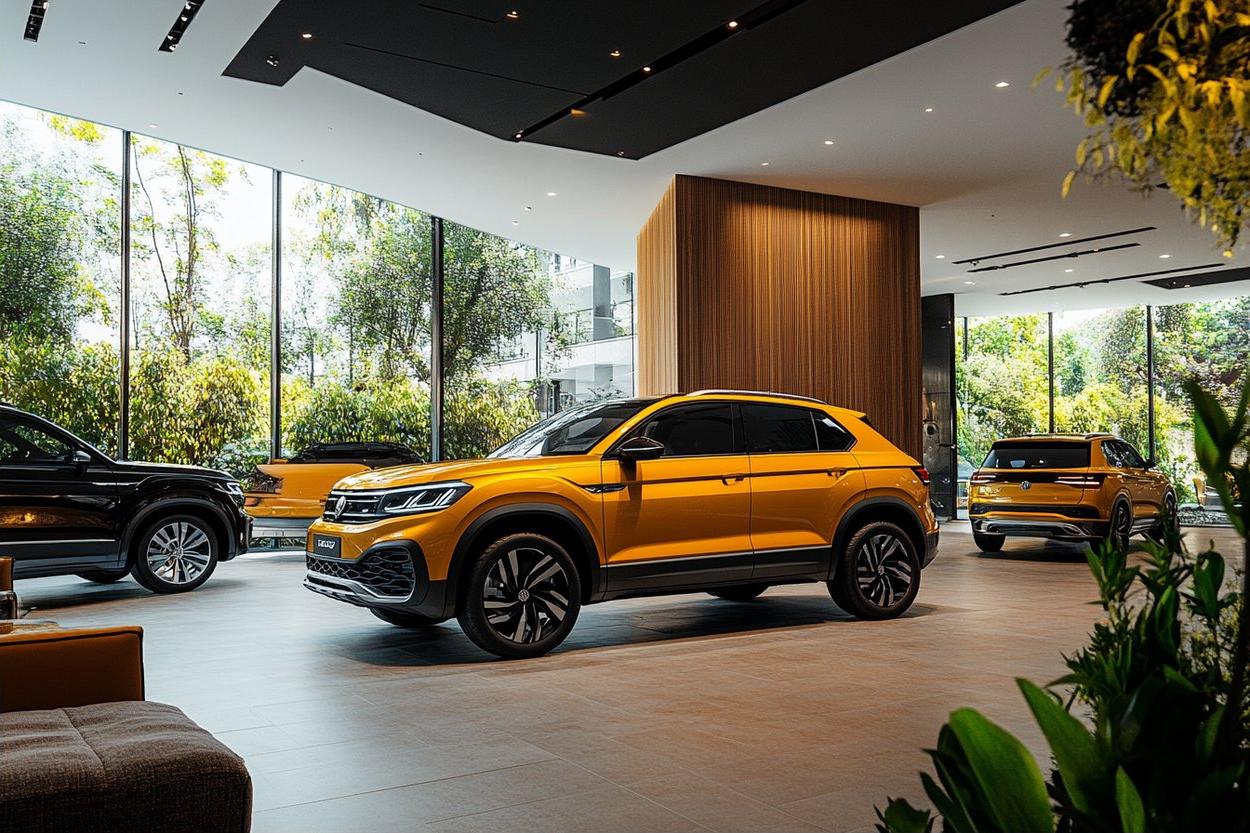2026 Nissan Qashqai vs 2025: Is Waiting for the New Compact SUV Worth It?
The Nissan Qashqai has long been a cornerstone in the competitive compact SUV market, known for blending practicality with style. As the automotive world buzzes about the upcoming 2026 model, many prospective buyers face a dilemma: purchase the current 2025 model or exercise patience for the next generation? This comparison explores the key differences, potential improvements, and practical considerations to help you make an informed decision about which Qashqai might best suit your needs and timing.

The Nissan Qashqai continues to be one of the most popular compact SUVs globally, with each new generation bringing significant improvements to keep pace with evolving consumer expectations and technological advancements. With rumors and preliminary information about the 2026 model circulating, potential buyers are weighing their options between the established 2025 version and its forthcoming successor. This comparison aims to provide clarity on whether waiting for the 2026 Qashqai makes sense based on expected changes, value considerations, and individual circumstances.
What’s Changed for 2026: Hybrid Powertrain Upgrades
The 2026 Nissan Qashqai is expected to feature substantial powertrain enhancements, focusing heavily on electrification. While the 2025 model offers the e-Power hybrid system in select markets, the 2026 version is anticipated to expand this technology across more trim levels with improved efficiency metrics. Industry sources suggest the new model may deliver enhanced electric range and potentially introduce a plug-in hybrid variant to compete with rivals like the Toyota RAV4 Prime and Hyundai Tucson PHEV.
Engineers are reportedly focusing on refinements to the existing e-Power system, which uniquely uses a gasoline engine primarily as a generator for the electric motors that drive the wheels. The 2026 model is expected to offer more seamless transitions between power sources and potentially higher overall system output. These powertrain upgrades could translate to meaningful improvements in both performance and fuel economy—key considerations for compact SUV buyers increasingly conscious of running costs and environmental impact.
Fresh Design and Modern Interiors for 2026
Visual updates for the 2026 Qashqai are expected to follow Nissan’s evolving design language, with a more assertive front fascia featuring slimmer LED headlights and a more prominent V-motion grille. The overall silhouette will likely maintain the crossover’s distinctive shape while introducing more sculpted body panels and aerodynamic enhancements. Spy photos suggest a slightly more angular approach compared to the rounded edges of the current model.
Inside, the 2026 Qashqai is anticipated to receive a comprehensive interior overhaul. The dashboard will likely adopt a more horizontal layout with an emphasis on digital displays, potentially featuring a larger central touchscreen and fully digital instrument cluster as standard across more trim levels. Material quality is expected to improve, with more soft-touch surfaces and sustainable material options. Technological integration will almost certainly advance, with enhanced connectivity features, over-the-air update capabilities, and more sophisticated driver assistance systems that move closer to semi-autonomous driving functionality.
How the New Qashqai Stacks Up Against the 2025 Model
Comparing the anticipated 2026 model with the current 2025 Qashqai reveals several key differences in overall value proposition. The 2025 model represents a known quantity—its reliability data is established, owner feedback is abundant, and its strengths and weaknesses are well-documented. It offers a proven package with competitive features for today’s market, including modern safety systems, reasonable fuel economy, and comfortable accommodations for passengers and cargo.
The 2026 model, while promising technological advancements and fresh styling, comes with the uncertainty of first-year production. Historically, newly redesigned vehicles sometimes experience early manufacturing issues or software bugs that get resolved in subsequent model years. However, the new model will likely offer future-proofed technology that could extend its relevant lifespan and potentially improve resale value in the long term. The decision ultimately hinges on whether the projected improvements justify both the wait and the likely price premium for the newer model.
Value, Features and Timing Considerations
From a value perspective, the timing of purchase plays a significant role in the decision-making process. As the 2026 model’s launch approaches, dealers will likely offer increasingly attractive incentives on remaining 2025 inventory. These end-of-cycle discounts can sometimes amount to thousands of dollars in savings, making the outgoing model particularly appealing from a pure value standpoint.
Feature comparison between generations typically reveals a pattern of technology that was once optional becoming standard equipment. Features that might be premium add-ons in the 2025 model could become included in the base price for 2026. However, entirely new features will likely command a premium on the 2026 model, potentially raising the entry price point. The question becomes whether these new features—like potentially more advanced driver assistance systems or improved infotainment—justify the higher initial investment.
When Waiting for the 2026 Version Makes Sense
Waiting for the 2026 Nissan Qashqai makes the most sense for certain types of buyers. If you prioritize having the latest technology, particularly in terms of connectivity and driver assistance features, the newer model will likely satisfy these requirements better. Similarly, if fuel economy is a primary concern, the expected advancements in the hybrid powertrain could deliver meaningful savings over the vehicle’s lifetime, potentially offsetting the higher initial purchase price.
Those who plan to keep their vehicle for many years (5+ years) may also benefit from waiting, as the newer design will stay current longer and potentially command better resale value when it’s time to sell. Additionally, if your current vehicle remains reliable and serviceable, the opportunity cost of waiting is relatively low compared to someone facing immediate transportation needs.
| Comparison Factor | 2025 Nissan Qashqai | 2026 Nissan Qashqai (Projected) |
|---|---|---|
| Starting Price | $26,000-$28,000 | $27,500-$30,000 (estimated) |
| Hybrid Technology | e-Power available on select trims | Enhanced e-Power system, possibly PHEV option |
| Infotainment | 8-9 inch touchscreen | Larger touchscreen with updated software |
| Driver Assistance | ProPILOT with limited functionality | Enhanced ProPILOT with expanded capabilities |
| Interior Design | Current generation styling | Refreshed layout with more digital features |
| Warranty Coverage | Standard Nissan warranty | Potentially unchanged |
Prices, rates, or cost estimates mentioned in this article are based on the latest available information but may change over time. Independent research is advised before making financial decisions.
When Buying the Current Year May Be Smarter
Conversely, there are compelling reasons to opt for the 2025 model rather than waiting. First-year production vehicles sometimes experience teething problems that get resolved in subsequent model years. By purchasing the 2025 Qashqai, you’re getting a vehicle that has benefited from several years of refinement within its current generation.
Immediate availability is another significant factor—the 2025 model is on dealer lots now, while the 2026 version might involve months of waiting, especially if supply chain issues or production delays occur. For buyers who need a vehicle soon, this consideration alone may tip the scales toward the current model.
Finally, the financial equation strongly favors the 2025 model in the short term. End-of-model-year incentives, combined with the generally lower starting price of the outgoing generation, can create substantial savings. These funds could be invested elsewhere or used to add optional features that might come standard on the 2026 model, potentially creating a more personalized vehicle that better meets your specific needs rather than paying for across-the-board upgrades you might not fully utilize.
The decision between the 2025 and 2026 Nissan Qashqai ultimately depends on your personal priorities, timeline, and financial considerations. The current model offers proven reliability and potential savings, while the upcoming version promises technological advancements and fresher styling. By weighing these factors against your specific needs and circumstances, you can determine whether waiting for the next generation is worthwhile or if the current Qashqai represents the better value proposition for your situation.




